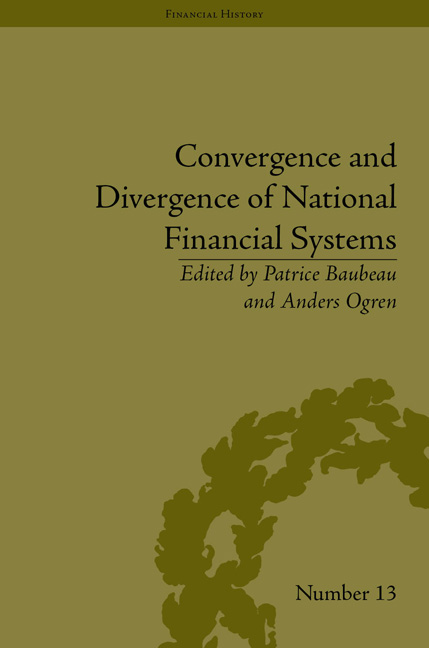 Convergence and Divergence of National Financial Systems
Convergence and Divergence of National Financial Systems Book contents
- Frontmatter
- CONTENTS
- Acknowledgements
- List of Figures
- Introduction
- Part I The Social Mechanisms of Financial Convergence
- Part II National Convergences and Divergences in the Long Term
- 4 Shocks Impact on Long-Term Market Correlations: Portfolio Diversification and Market Integration between France and the United States
- 5 Assessing Convergence in European Investment Banking Patterns until 1914
- 6 Swiss Banking Crises During the Gold Standards, 1906–71
- Part III Convergence and Historical Shocks
- Part IV Convergence and Monetary Constraint
- Notes
- Works Cited
- Index
6 - Swiss Banking Crises During the Gold Standards, 1906–71
from Part II - National Convergences and Divergences in the Long Term
- Frontmatter
- CONTENTS
- Acknowledgements
- List of Figures
- Introduction
- Part I The Social Mechanisms of Financial Convergence
- Part II National Convergences and Divergences in the Long Term
- 4 Shocks Impact on Long-Term Market Correlations: Portfolio Diversification and Market Integration between France and the United States
- 5 Assessing Convergence in European Investment Banking Patterns until 1914
- 6 Swiss Banking Crises During the Gold Standards, 1906–71
- Part III Convergence and Historical Shocks
- Part IV Convergence and Monetary Constraint
- Notes
- Works Cited
- Index
Summary
Introduction
Switzerland participated in the varying gold standards in the period 1871–1971. Switzerland backed its currency to gold and committed itself to fixed gold exchange rates from 1878–1914 and from the end of 1924 until 1936. After the Second World War Switzerland returned to gold convertibility until 1973. In order to understand the implications of the gold standard regimes for the divergence and convergence of international financial systems it is important to investigate the outcome for the banking industry. Using a new data set on Swiss banking it becomes possible to study banks’ balance sheets over a long time period from 1906 until 1971.
During these times Switzerland had to cope with three banking crises, the first being a consolidation of the banking industry in the years 1911–14 and the second one a result of the First World War in the years 1920–1. Last, a very severe banking crisis occurred in the wake of the Great Depression in the years 1931–5.
In this chapter, the three Swiss banking crises in the period 1906–71 will be analysed with respect to gold standard membership. The gold standard regimes might have helped European financial systems to converge and to prosper growth due to the reductions in exchange rate fluctuations during normal times. At the same time increased international interdependencies might have made the Swiss financial industry more vulnerable to foreign shocks in times of crises.
An indicator measuring the output gap between the potential return on equity and actually achieved return on equity is proposed, instead of using the traditional measures such as return on equity, Tier I ratio or cost–income ratio. By including the profit and loss accounts as well as balance-sheet data in the investigation, it becomes possible to reduce a comprehensive data set to one single measure. If a banking group strongly deviates from its potential output it is considered to be under distress.
- Type
- Chapter
- Information
- Convergence and Divergence of National Financial SystemsEvidence from the Gold Standards, 1871–1971, pp. 109 - 126Publisher: Pickering & ChattoFirst published in: 2014


